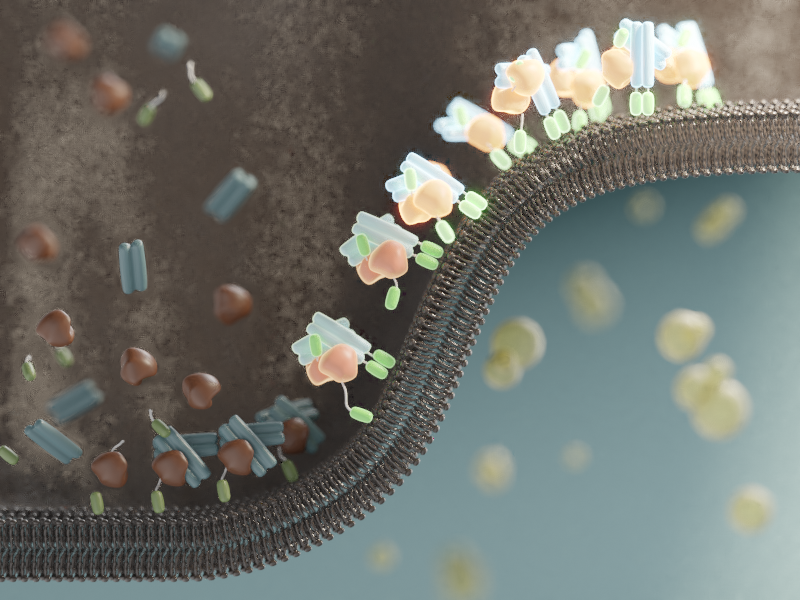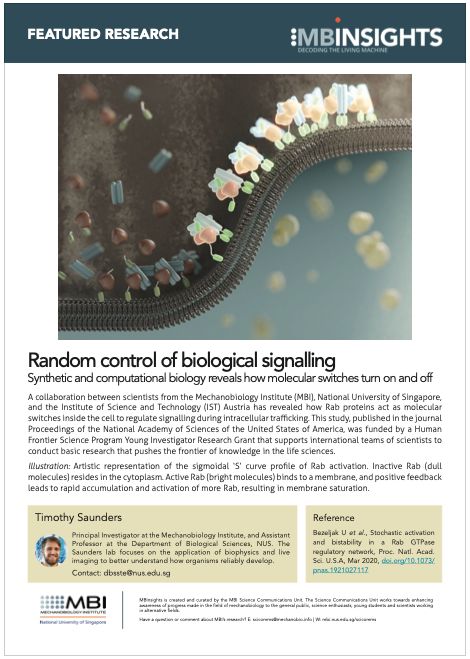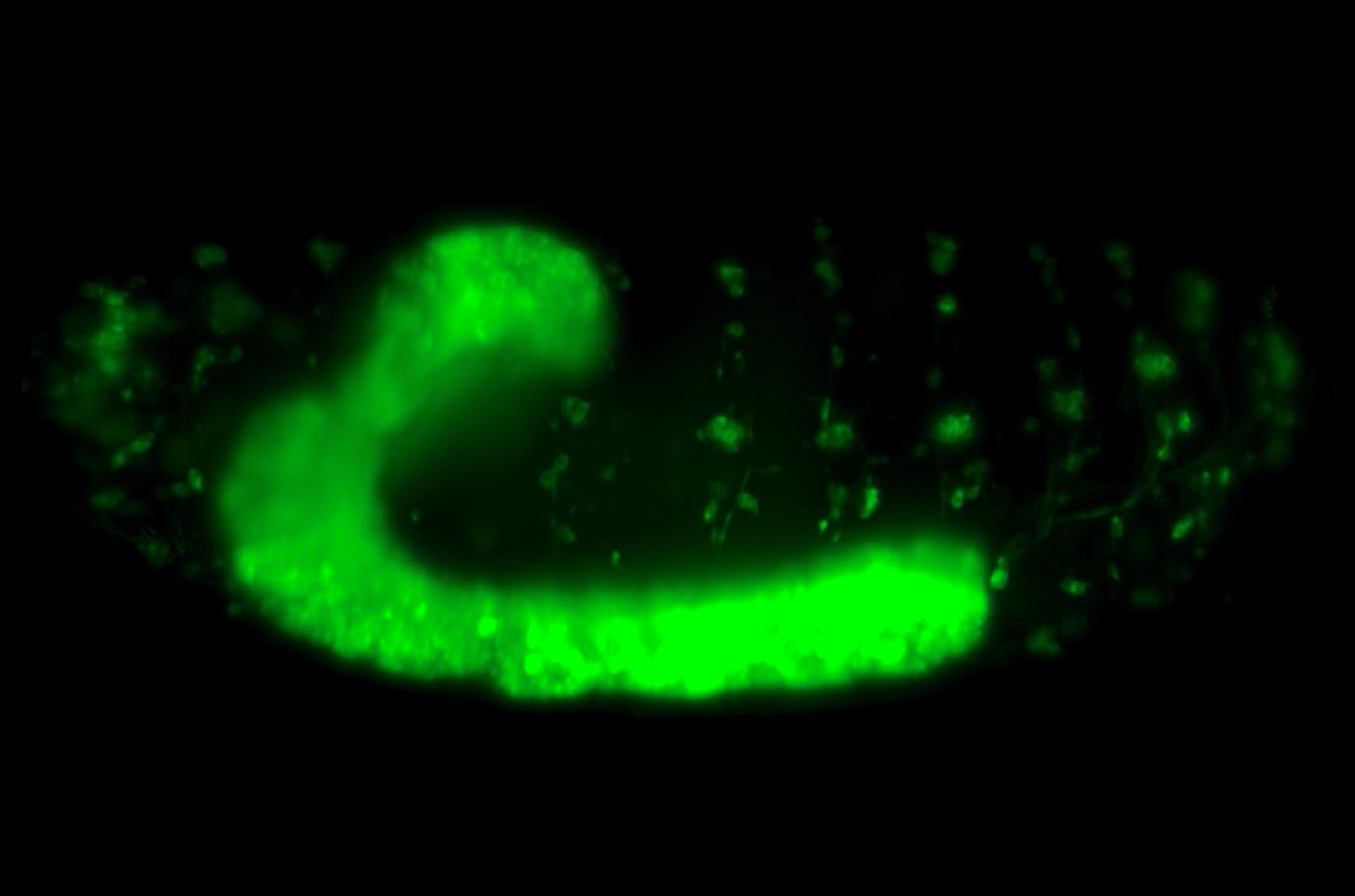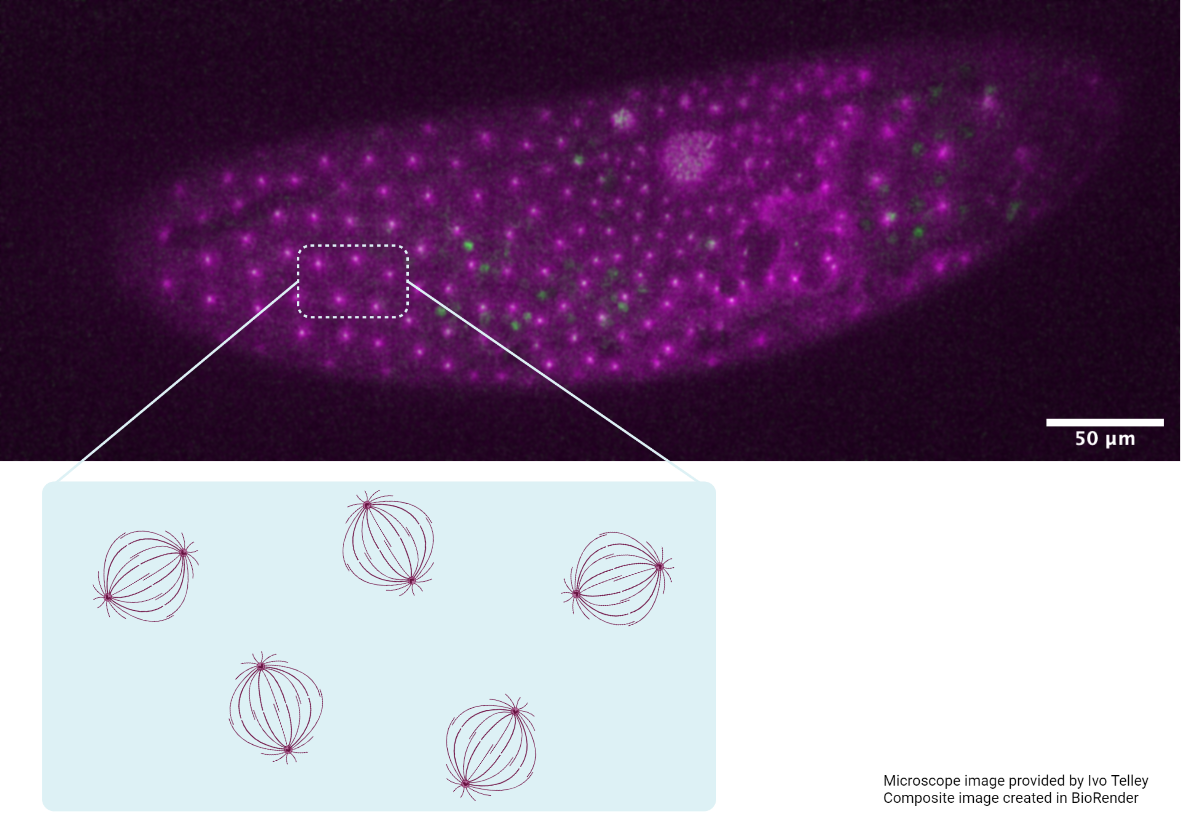Random control of biological signalling
Synthetic and computational biology reveals how molecular switches turn on and off
Written by Andrew MS Wong, PhD. Illustration by Diego Pitta de Araujo, PhD | 11 Mar 2020
A collaboration between scientists from the Mechanobiology Institute (MBI), National University of Singapore, and the Institute of Science and Technology (IST) Austria has revealed how Rab proteins act as molecular switches inside the cell to regulate signalling during intracellular trafficking. This study, published in the journal Proceedings of the National Academy of Sciences of the United States of America, was funded by a Human Frontier Science Program Young Investigator Research Grant that supports international teams of scientists to conduct basic research that pushes the frontier of knowledge in the life sciences.

Artistic representation of the sigmoidal ‘S’ curve profile of Rab activation. Inactive Rab (dull molecules) resides in the cytoplasm. Active Rab (bright molecules) binds to a membrane, and positive feedback leads to rapid accumulation and activation of more Rab, resulting in membrane saturation.
How stochasticity enables fine regulation of molecular switches
Mechanical and biochemical signalling within the cell relies on the activity of a superfamily of proteins known as small GTPases. These proteins act as ‘molecular switches’ that alternate between an active state where they are bound to an energy-containing guanidine triphosphate (GTP) molecule and an inactive state where they are bound to guanidine diphosphate (GDP). Swapping the low-energy GDP for high-energy GTP switches on the small GTPase. Inactive small GTPases are typically found floating inside the cell in the cytoplasm, whereas active GTPases are located on a membrane. Depending on the direction of signalling, active GTPases are located at the cell membrane, or an intracellular membrane organelle such as the nucleus. Together, the small GTPase superfamily play a role in controlling many cellular processes such as growth, cell division, and polarization.
Stochasticity, or randomness is an essential component for precise control of biological signalling
A subset of the small GTPases superfamily are the Rab proteins, which regulate intracellular trafficking. This trafficking is done by vesicles, self-enclosed compartments of membrane that transport cargo, such as proteins, neurotransmitters, or essential nutrients, throughout the cell. For example, selected Rab proteins control the movement of freshly synthesized proteins made in the nucleus to the Golgi body (a sorting office for cell components), and another group of Rab proteins regulates their sorting and dispersal to their target destination. Rab proteins also control endocytosis, the process by which cargo is brought into the cell from outside.
With over 70 members, the Rab protein family controls the formation, movement, docking, and fusion of vesicles. Understanding the complex network activity of the Rab family in the cell is an immense challenge, like trying to understand the flow of people and cargo in a major city by observing pedestrian, road, bus, and rail traffic. In the same way that you would isolate out one transport network for investigation, it would be ideal to dissect out and focus on the activity of one specific Rab protein.
In order to tackle this challenge, Martin Loose from IST Austria and Timothy Saunders from MBI, National University of Singapore, joint members of a Human Frontier Science Program (HFSP) Young Investigator team, combined a synthetic biology approach with computational and biophysical modelling. They focused on one Rab protein, Rab5, which is known to control the formation of endosomes and lysosomes during endocytosis. To avoid biological complexity, they built a minimal network to isolate and observe Rab5 activity. This minimal network consisted of fluorescent labelled Rab5, so that the movement of Rab5 could be tracked by microscopy; along with a Rab5 inhibitor that extracts active Rab5 from the membrane and keeps it inactive within the cytoplasm; Rab5 activators that promote Rab5 membrane docking and attachment; all combined with artificial lipid membranes.
Rab5 activation follows a sigmoid curve
Microscopic imaging revealed that activated Rab5 accumulated in the artificial membranes, mimicking the behaviour in the cell and validating the minimal network. Next, they observed how Rab5 accumulated on membranes in the presence of increasing amounts of Rab5 activators. Interestingly, the research team discovered that Rab5 activation followed a S-shaped, or sigmoidal curve profile (as shown in the illustration). At low activator levels, Rab5 was not found on the membrane, but after a critical threshold of activator level was reached, Rab5 quickly accumulated on the membrane and rapidly reached a saturation point. This sigmoidal curve profile demonstrates how Rab GTPases work as ‘molecular switches’, as they effectively exist either in an on or off state, with minimal transition time required.
However, subsequent experiments revealed that while Rab5 activation always followed the same sigmoidal curve profile, the time taken for Rab5 to switch on varied, even at the critical threshold level of Rab5 activators. In order to understand this difference in response time, the researchers created a computational model of the minimal network. They realized that for the model to closely approximate the experimental data, they needed to add a factor of biochemical random noise into their calculations. This factor, also known as stochasticity, provides a level of temporal and spatial regulation during the control of Rab5 activation, allowing a degree of fine tuning over biological signalling.
By incorporating stochasticity, the researchers were also able to discover that inactive Rab5 in the cytoplasm could randomly bind to membranes, and in the presence of enough Rab5 activators, this Rab5 becomes switched on and acts as a ‘seed’ on the membrane to recruit and activate more Rab5. This positive feedback mechanism also explains the rapid increase and saturation of Rab5 exhibited by the sigmoidal response curve.
HFSP funding supports interdisciplinary research that attempts to answer fundamental biological questions using novel approaches from other scientific disciplines. This study is a clear example of the power of interdisciplinary science, with the discovery of experimental and computational evidence for how Rab5 proteins switch on and off. Importantly, this approach could easily be applied to understand other members in the Rab protein family, and even extended to the whole small GTPase superfamily to unveil the complex network of biological signalling within the cell.










